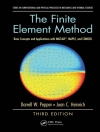The use of the symmetries of a physical system in the study of its dynamics has a long history that goes back to the founders of c1assical mechanics. Symmetry-based tech- niques are often implemented by using the integrals 01 motion that one can sometimes associate to these symmetries. The integrals of motion of a dynamical system are quan- tities that are conserved along the fiow of that system. In c1assieal mechanics symme- tries are usually induced by point transformations, that is, they come exc1usively from symmetries of the configuration space; the intimate connection between integrals of motion and symmetries was formalized in this context by NOETHER (1918). This idea can be generalized to many symmetries of the entire phase space of a given system, by associating to the Lie algebra action encoding the symmetry, a function from the phase space to the dual of the Lie algebra. This map, whose level sets are preserved by the dynamics of any symmetrie system, is referred to in modern terms as a momentum map of the symmetry, a construction already present in the work of LIE (1890). Its remarkable properties were rediscovered by KOSTANT (1965) and SOURl AU (1966, 1969) in the general case and by SMALE (1970) for the lifted action to the co tangent bundle of a configuration space. For the his tory of the momentum map we refer to WEINSTEIN (1983b) and MARSDEN AND RATIU (1999), 11. 2.
Juan-Pablo Ortega & Tudor S. Ratiu
Momentum Maps and Hamiltonian Reduction [PDF ebook]
Momentum Maps and Hamiltonian Reduction [PDF ebook]
Koop dit e-boek en ontvang er nog 1 GRATIS!
Taal Engels ● Formaat PDF ● ISBN 9781475738117 ● Uitgeverij Birkhauser Boston ● Gepubliceerd 2013 ● Downloadbare 3 keer ● Valuta EUR ● ID 4756812 ● Kopieerbeveiliging Adobe DRM
Vereist een DRM-compatibele e-boeklezer












